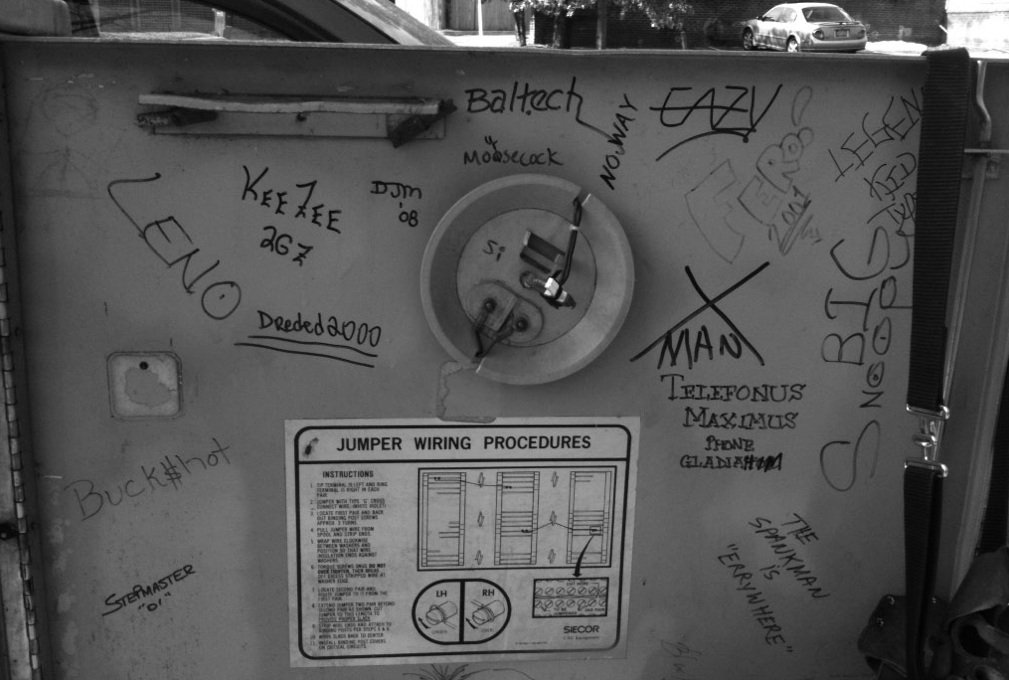
GET @ ME: SOCIAL MEDIA GRAFFITI
Illegal public name-writing is a tool used to create and maintain a public self-identity of one’s choosing and is a tradition in American youth culture that stretches back over a hundred and fifty years. In that time writers have made use of the most utilitarian tools to make their mark and accomplish their goal of acquiring notoriety for their name.
Since 2012 a new form of graffiti has been documented on the streets, this graffiti is connected to social media platforms and changes the way the graffiti writers can connect to viewers.

PUTTIN’ IN WORK: SEARCHING FOR THE WORKING-CLASS ROOTS OF ILLEGAL PUBLIC NAME-WRITING
Graffiti art is big business. Since its public emergence from New York City’s working-class slums in the early 1970s, it has risen to become the fastest-growing art movement in recent history. In the process, it has spawned an entire industry dedicated to the lifestyle and supply of graffiti culture and in turn has distanced itself considerably from its working-class roots. With the rise in popularity of graffiti art, the original name-writing tradition and its forms seem to have gone extinct under the layers of paint. This begs the question: Is there any evidence of a continuation in the pre-graffiti art, public name-writing tradition in the working-class?

ENEMY OF THE STATE: THE HUNT FOR INTERNATIONAL GRAFFITI QUEEN UTAH AND THE IMPLICATIONS FOR TRANSIT GRAFFITI
When I set out to write this article, my primary focus was to profile a highly visible female graffiti writer, Danielle “UTAH” Bremner. Over the last six years, she has become one of the most prolific writers in the world, a feat unmatched by any other woman on the writing scene today. Through my research, as the details of UTAH’s story came to light, it quickly became apparent that her true significance to graffiti culture is much deeper than her involvement as a woman in this male-dominated subculture. As a result, readers will note that Utah’s personal story warns of a stark future for transit graffiti

AMERICAN GRAFFITI: THE ILLEGAL TRADITION OF PUBLIC NAME WRITING IN THE UNITED STATES
In the United States, the lineage of different subcultures involved in illegal name-writing movements goes back at least 130 years. Not all of these threads can be linked to a single point of emergence, but, in many cases, the phenomena developed simultaneously among various groups. Although each of the practices developed its system of prestige and style, they all have a very human propensity: the desire to express oneself and leave one’s mark in public places along the American landscape.

